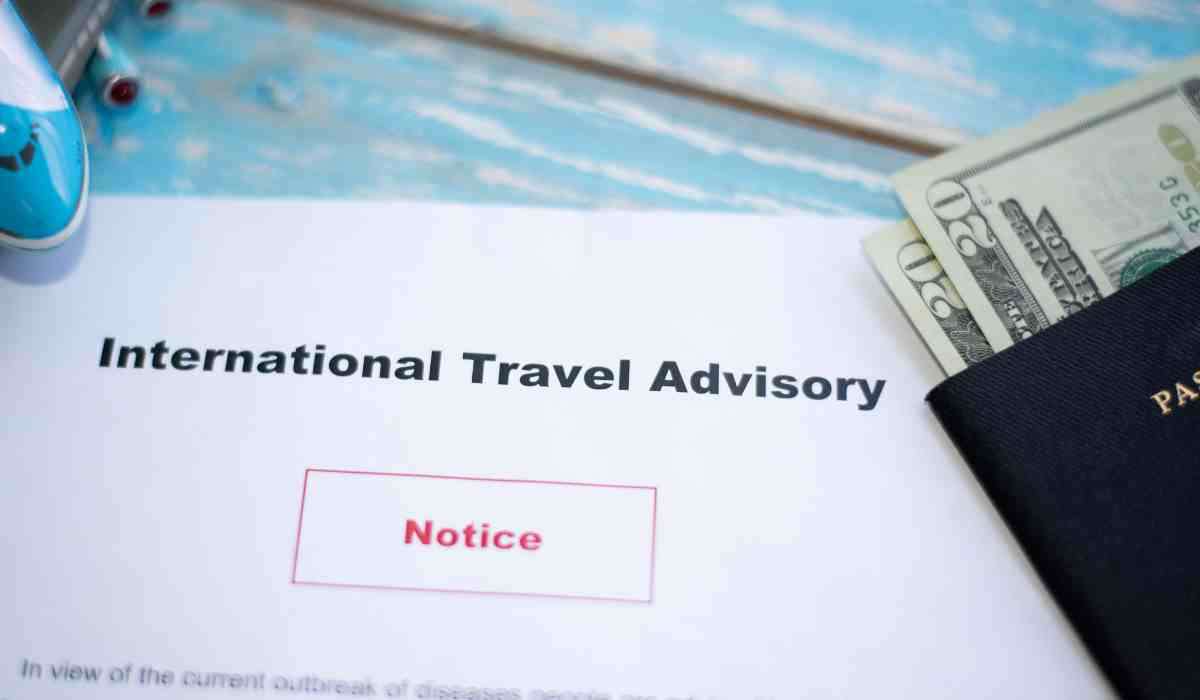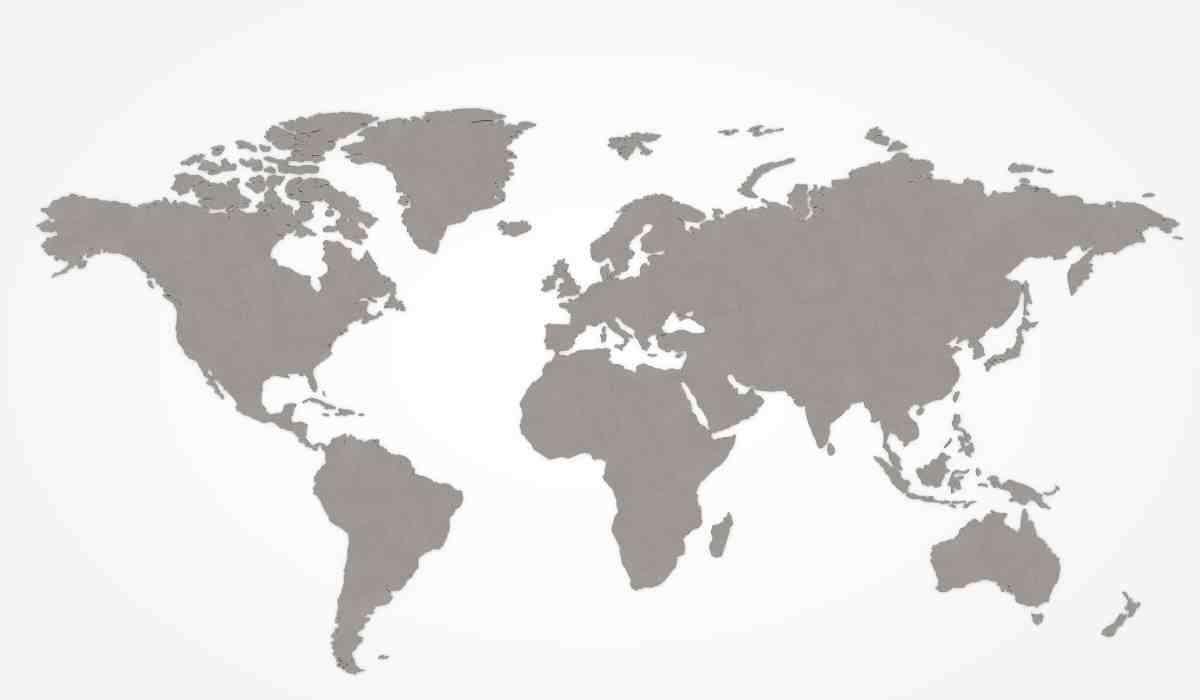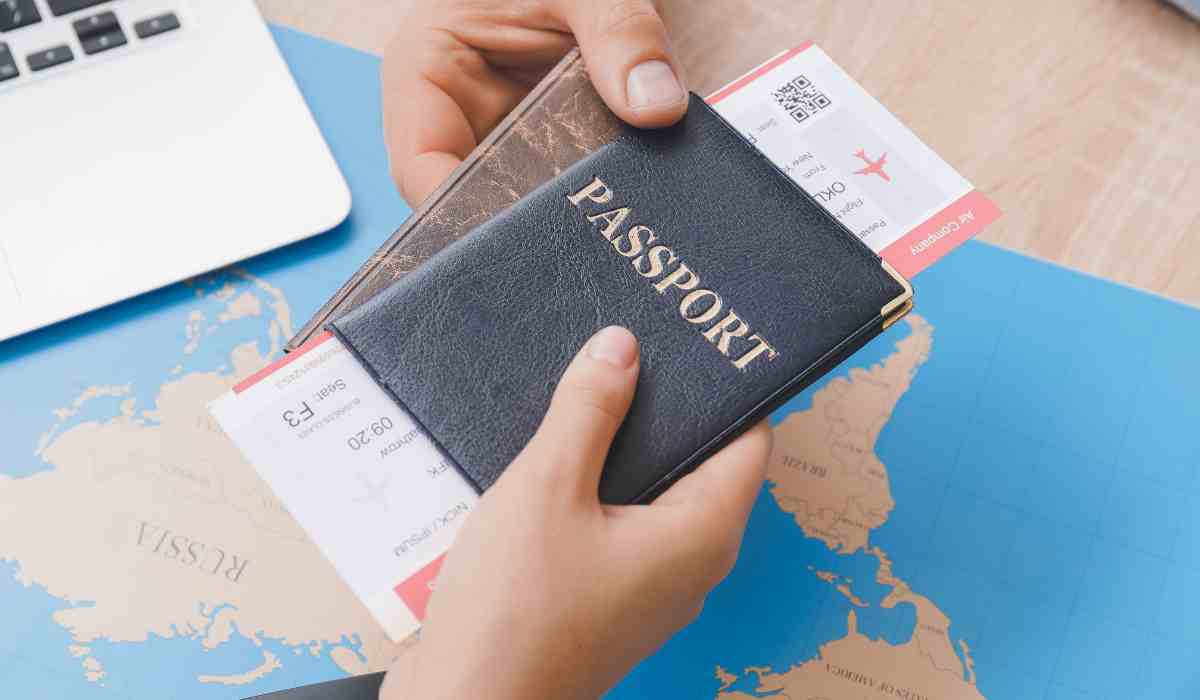Global Travel Advisory Updates 2024
Contents
- 1 Global Travel Advisory Updates 2024
- 1.1 Understanding Travel Advisories
- 1.2 The Importance of Country-Specific Travel Advice
- 1.3 Safety Measures for International Travel
- 1.4 Worldwide Travel Advisories: Stay Informed
- 1.5 Countries on the Do Not Travel List
- 1.6 Understanding Level 4 Travel Advisory Countries
- 1.7 Understanding Level 3 Travel Advisory Countries
- 1.8 Understanding Level 2 Travel Advisory Countries
- 1.9 State Department New Travel Advisory Updates
- 1.10 Using Travel Advisory Maps
- 1.11 International Travel Guidelines for 2024
- 1.12 Conclusion
- 1.13 FAQ
- 1.13.1 What are travel advisories?
- 1.13.2 How do travel advisories help travelers?
- 1.13.3 What are the different levels of travel advisories?
- 1.13.4 Where can I find country-specific travel advice?
- 1.13.5 What are some essential travel safety tips?
- 1.13.6 How can I stay informed about worldwide travel advisories?
- 1.13.7 Which countries are on the do not travel list?
- 1.13.8 What should travelers know about level 4 travel advisory countries?
- 1.13.9 What precautions should I take for level 3 travel advisory countries?
- 1.13.10 How should travelers approach level 2 travel advisory countries?
- 1.13.11 Where can I find the latest State Department travel advisory updates?
- 1.13.12 How can I effectively use travel advisory maps?
- 1.13.13 What are the international travel guidelines for 2024?
- 2
Stay informed on the latest global travel advisory updates for each country with essential safety tips and guidelines for 2024.
Did you know that there are currently over 200 countries and territories in the world, each with its own unique travel advisory? Navigating through the intricacies of travel advisories can be a daunting task, but it is essential for any traveler to stay informed about the latest updates and guidelines to ensure their safety and well-being.
Key Takeaways
- Stay informed about the latest global travel advisory updates to make informed decisions.
- Follow country-specific travel advice and guidelines to ensure your safety while traveling.
- Implement necessary safety measures and precautions when embarking on international trips.
- Check reliable sources such as government websites for travel updates.
- Be aware of countries on the do not travel list and understand the risks associated with them.
Understanding Travel Advisories
Travel advisories play a vital role in helping travelers make informed decisions while planning their trips. By providing important information about potential risks and hazards, travel advisories help ensure the safety and well-being of travelers.
Travel advisories are issued by governmental authorities, such as the U.S. Department of State or the Centers for Disease Control and Prevention (CDC), to alert travelers about potential dangers in specific destinations. These advisories serve as valuable resources to gather information about travel alerts, travel warnings, and other vital details.
Travel advisories are official notices that provide guidance and recommendations to individuals planning to visit a particular country or region. They are based on thorough assessments of various factors, including political stability, crime rates, terrorism threats, natural disasters, health concerns, and other potential risks.
It’s essential to understand the different levels of travel advisories:
- Travel alerts are issued for short-term events that may pose significant risks to travelers. These events can include protests, civil unrest, or disease outbreaks. Travelers should remain cautious and stay updated on the situation.
- Travel warnings are more severe and indicate an ongoing, long-term risk in a specific country or region. This level of advisory advises against non-essential travel and highlights significant safety concerns.
“Safety and security should always be a top priority when planning your travels. Understanding and heeding travel advisories can help you make informed decisions and stay safe.”
When considering travel advisories, it’s important to remember that they are not meant to discourage travel altogether. Instead, they aim to provide travelers with essential information to help them assess risks, take necessary precautions, and plan their trips accordingly.
Staying Informed: Reliable Sources for Travel Advisories
It’s crucial to consult reliable sources for the most up-to-date travel advisories. Here are a few reliable sources:
- The website of the U.S. Department of State provides comprehensive travel information, including country-specific advisories and safety guidelines.
- The CDC’s Travelers’ Health website offers valuable health-related information and recommendations for travelers.
- Reputable travel organizations, such as the World Health Organization (WHO) and local tourism boards, can also provide reliable travel advisories.
| Website | Features |
| U.S. Department of State |
Comprehensive travel advisories and safety guidelines
|
| CDC’s Travelers’ Health |
Health-related information and recommendations
|
| World Health Organization |
International health guidance and travel advisories
|
By staying informed and regularly checking these sources, travelers can make informed decisions and ensure their safety while exploring the world.
The Importance of Country-Specific Travel Advice

When planning your international trips, it is essential to seek country-specific travel advice and foreign travel guidance. Staying updated on the travel recommendations and safety guidelines for each destination can make all the difference in ensuring a smooth and enjoyable journey.
Why is country-specific travel advice so crucial? Well, every country has its own unique set of travel risks, safety concerns, and cultural norms. By understanding and following the recommendations provided by trusted sources, you can better prepare yourself for any challenges you may encounter.
“Country-specific travel advice is like having a knowledgeable local guide by your side, helping you navigate unfamiliar territories and avoid potential pitfalls.”
These travel advisories provide valuable information on a wide range of topics, including:
- Security threats: Advices highlighting areas of potential danger, such as high crime rates or political instability, can help you make informed decisions about where to visit and how to stay safe.
- Health risks: Recommendations regarding vaccinations, disease outbreaks, and necessary precautions can protect your well-being and prevent avoidable health issues during your trip.
- Entry and exit requirements: Information about visa requirements, passport validity, and customs regulations ensures a smooth entry and exit process, saving you time, money, and unnecessary stress.
- Cultural sensitivities: Tips on local customs, dress codes, and etiquette can help you show respect and avoid unintentional offense while immersing yourself in different cultures.
By following country-specific travel advice, you demonstrate respect for the local culture, minimize potential risks, and enhance your overall travel experience. Ignoring or neglecting this guidance could result in unforeseen difficulties.
Seeking Reliable Sources

When it comes to country-specific travel advice, it is crucial to rely on trusted sources for accurate and up-to-date information. Government websites, such as the U.S. Department of State’s travel advisory, provide comprehensive guidance backed by thorough research and analysis.
Additionally, international organizations, travel associations, and reputable travel agencies can be valuable sources of information. Consider consulting reliable travel blogs and forums where experienced travelers share their insights and recommendations.
Remember, the more informed you are about your destination, the better equipped you will be to make informed decisions and mitigate potential risks.
| Benefits of Country-Specific Travel Advice |
How it Enhances Your Travel Experience
|
| 1. Safety |
Understand potential risks and take appropriate precautions.
|
| 2. Health |
Stay informed about health risks, vaccinations, and necessary precautions.
|
| 3. Culture |
Show respect by understanding local customs, traditions, and etiquette.
|
| 4. Entry Requirements |
Ensure a smooth and hassle-free entry into your destination country.
|
| 5. Security |
Stay vigilant and make informed decisions to protect your personal safety.
|
By recognizing the importance of country-specific travel advice, you can embark on your journeys with confidence, knowing you have taken all necessary precautions to ensure a memorable and safe experience.
Safety Measures for International Travel

When planning your next adventure abroad, it’s important to prioritize your safety and well-being. By following these essential travel safety tips and measures, you can have a worry-free experience during your international trips.
1. Research your destination:
Before traveling to a new country, take the time to research important information about the local culture, customs, and laws. Familiarize yourself with any travel advisories or warnings issued by your government. This will help you make informed decisions and avoid potential risks.
2. Secure your travel documents:
Keep your passport, identification, and travel documents in a safe and secure place. Make copies of important documents and store them separately. It’s also a good idea to have digital copies or scans of your documents stored securely online.
3. Stay aware of your surroundings:
When you arrive at your destination, stay vigilant and aware of your surroundings. Be cautious in crowded areas, especially in tourist hotspots, and avoid displaying signs of wealth or carrying excessive amounts of cash. Stay in well-lit areas and use reputable transportation options.
4. Protect your personal belongings:
Keep your valuables, including electronics, cash, and jewelry, secure and out of sight. Consider using a money belt or hidden pouch to store your belongings while exploring. Avoid leaving your belongings unattended, whether it’s at a hotel or in public places.
5. Plan for health and medical needs:
Research the health risks and requirements of your destination before traveling. Ensure that you have sufficient travel insurance that covers medical expenses and emergency evacuation. Pack a first aid kit with essential medications, and check if you need any vaccinations before your trip.
6. Stay connected:
Keep your loved ones informed about your travel plans and share your itinerary with someone you trust. Stay connected to reliable sources of information, such as your embassy or consulate, in case of emergencies or unexpected events. Consider purchasing a local SIM card or an international roaming plan to stay connected with both your loved ones and emergency services.
7. Practice good hygiene:
During your travels, maintain good hygiene practices to prevent illness. Wash your hands frequently with soap and water or use hand sanitizer. Avoid consuming tap water and opt for bottled water or boiled water. Pay attention to the quality and cleanliness of the food you consume.
8. Be prepared for emergencies:
Prepare for potential emergencies by knowing the location of the nearest hospital and emergency services in your destination. Save important contact numbers, such as your embassy or consulate, local emergency services, and your travel insurance provider.
By following these safety measures and taking necessary precautions, you can ensure a safe and enjoyable international travel experience. Remember, your safety should always be a top priority, so stay informed, be prepared, and embrace the adventure.
Worldwide Travel Advisories: Stay Informed
Stay updated on the latest worldwide travel advisories in this section. It’s crucial to stay informed about travel updates to ensure a safe and enjoyable journey. Knowing the latest travel advisories can help you make informed decisions about your travel plans.
To access reliable sources for travel updates, consider visiting government websites and reputable travel organizations. These sources provide accurate and up-to-date information on worldwide travel advisories. They often provide comprehensive details about specific countries and regions, including any potential risks or safety concerns that travelers should be aware of.
By staying informed about worldwide travel advisories, you can plan your trips more effectively and take necessary precautions. Whether you are traveling for leisure or business, it is essential to stay updated on the latest travel advisories to ensure a smooth and safe journey.
| Resource | Description |
| U.S. Department of State Travel Advisories |
The U.S. Department of State provides travel advisories that offer guidance for U.S. citizens traveling abroad. Their advisories provide information on safety and security conditions as well as any potential travel restrictions in various countries.
|
| Centers for Disease Control and Prevention |
The Centers for Disease Control and Prevention (CDC) provides travel health notices that inform travelers about current health risks and disease outbreaks globally. Their notices include guidance on vaccinations, health precautions, and any travel restrictions related to health concerns.
|
| World Health Organization |
The World Health Organization (WHO) provides regular updates on international health emergencies, including disease outbreaks, pandemics, and other global health events. Their updates can help you assess and manage potential health risks when traveling.
|
| Reputable Travel News Websites |
Stay informed by regularly checking reputable travel news websites that provide real-time updates on travel advisories, safety guidelines, and travel-related news. These websites often cover a wide range of travel destinations and provide insights from experienced travelers and experts.
|
Countries on the Do Not Travel List
If you’re planning an international trip, it’s crucial to check the current list of countries on the do not travel list as recommended by the State Department’s travel advisory. These recommendations are put in place to ensure your safety and minimize potential risks during your travels.
The State Department’s travel advisory regularly updates the list of countries where travel is considered dangerous or risky. Factors such as political instability, natural disasters, terrorism, and high crime rates may contribute to a country being on the do not travel list.
Travelers should always prioritize their safety by heeding the advice and recommendations provided by the State Department’s travel advisory. It is invaluable for making informed decisions and avoiding unnecessary risks.
Potential Risks and Reasons Behind Recommendations
The State Department evaluates multiple factors when determining the travel risk level for each country. These factors may include:
- Security threats and political instability
- Violent crime rates
- Terrorist activity
- Health risks and outbreaks
- Natural disasters
By analyzing these factors, the State Department provides travel recommendations that prioritize your safety and well-being. It’s important to familiarize yourself with the reasons behind each recommendation to understand the potential risks involved in traveling to certain countries.
Staying Informed and Making Informed Decisions
Before planning your next international trip, I would strongly recommend checking the State Department’s travel advisory to see if any countries you intend to visit are on the do-not travel list. They also provide valuable information and resources to help you stay informed about travel restrictions, visa requirements, and local laws and customs.
Additionally, other reputable sources such as your country’s embassy or consulate in the destination country can provide further guidance and assistance.
| Country |
Reason for Recommendation
|
| Afghanistan |
High level of terrorist activity and ongoing armed conflict.
|
| Yemen |
Political instability and ongoing armed conflict.
|
| Syria |
High level of terrorist activity, armed conflict, and civil unrest.
|
| Venezuela |
Political instability, crime, and a deteriorating healthcare system.
|
| North Korea |
Restrictions on movement, limited consular assistance, and arbitrary punishments.
|
Please note that the table above is just a small sample and the list of countries on the do not travel list may vary. Always refer to the official State Department’s travel advisory for the most up-to-date information.
Understanding Level 4 Travel Advisory Countries
When it comes to international travel, it’s important to stay informed about the risks involved in different countries. Level 4 travel advisory countries require special attention due to the high level of risk and potential dangers for travelers. These advisories are issued when there is a significant threat to the safety and security of individuals.
So, what determines if a country receives a level 4 travel advisory? The criteria used to assess these advisories include factors such as:
- Conflict zones and active war zones
- Widespread violence and political unrest
- High crime rates and organized crime activities
- Terrorist activities and threats
- Prolonged civil unrest or ongoing protests
- Health risks, such as disease outbreaks or inadequate healthcare infrastructure
Travelers must be aware of the risks and potential challenges they may face in these level 4 travel advisory countries. It’s essential to thoroughly research the current situation and understand the specific precautions recommended by government agencies, such as the State Department.
“Travelers should exercise extreme caution when visiting level 4 travel advisory countries. It’s crucial to stay updated on the current situation, follow local news, and register with the nearest U.S. embassy or consulate for assistance and safety information.” – U.S. Department of State
It’s important to note that travel advisories are not meant to deter travelers altogether. Instead, they serve as a guide to help individuals make informed decisions based on available information. If you do decide to travel to a level 4 travel advisory country, take the necessary precautions to ensure your safety and well-being.
As the situation in these countries can change rapidly, it’s crucial to stay updated on any travel advisories or warnings issued by your government. Consult reputable sources, such as official government travel websites or trusted travel organizations, for the latest information.
Level 4 Travel Advisory Countries (2024)
| Country |
Reason for Level 4 Advisory
|
| Afghanistan |
Active conflict, terrorism threats
|
| Syria |
War, high violence
|
| Yemen |
Conflict, terrorism, shortage of essential services
|
| Somalia |
Persistent crime, terrorism threats, kidnapping risks
|
| Iraq |
Terrorism, armed conflict
|
Please note that this is not an exhaustive list of countries with a level 4 travel advisory. It’s essential to check with your government’s travel advisory website or consult a trusted travel agent for the most up-to-date information.
Understanding Level 3 Travel Advisory Countries
When it comes to international travel, staying informed about travel advisories is essential in ensuring your safety and security. Level 3 travel advisory countries are those that pose a significant risk to travelers. In this section, I will provide insights into the factors considered when issuing these advisories and the precautions that should be taken when visiting these destinations.
Factors Considered in Level 3 Travel Advisories
Level 3 travel advisories are issued when there are specific threats or risks in a country that could pose significant danger to travelers. These risks could include political instability, high crime rates, ongoing conflict, natural disasters, or outbreaks of diseases. The U.S. Department of State and other reputable sources carefully assess these factors to determine the level of risk and issue appropriate advisories.
Precautions for Travelers
For individuals considering travel to level 3 advisory countries, it is crucial to take extra precautions to ensure your safety. Here are some recommendations to keep in mind:
- Research and Stay Informed: Before traveling to a level 3 advisory country, research and stay informed about the current situation, including recent incidents, local laws and customs, and any travel restrictions or requirements.
- Register with the Embassy: Register your travel plans with the U.S. embassy or consulate in the destination country. This will allow them to contact you in case of emergencies or provide important updates.
- Follow Local Authorities: Stay updated on local news and follow the instructions of local authorities. They have a better understanding of the situation and can provide guidance on the safest areas to visit.
- Avoid High-Risk Areas: Be mindful of areas that are known for higher crime rates or political unrest. Avoiding these areas can significantly reduce your risk of encountering any dangerous situations.
- Take Health Precautions: In addition to safety concerns, level 3 advisory countries may also have health risks. Check if any vaccinations or health recommendations are necessary for your destination and follow them diligently.
Remember, level 3 travel advisory countries should be approached with caution, but with the right preparation and precautions, you can still have a meaningful and safe travel experience.
Understanding Level 2 Travel Advisory Countries
When planning your international travel, it’s essential to be aware of the level of risk associated with different countries. Level 2 travel advisory countries indicate a moderate risk for travelers.
These advisories are issued after a thorough evaluation of various factors, including political stability, crime rates, natural disasters, and health concerns. The goal is to provide accurate and up-to-date information to help you make informed decisions about your travel plans.
While a level 2 travel advisory suggests a moderate risk, it is important to note that the level of risk may vary within specific regions or cities of a country. Therefore, it’s crucial to stay informed about the specific areas you plan to visit and assess the risks accordingly.
Precautions that travelers should consider when visiting level 2 travel advisory countries include:
- Researching the specific destination thoroughly
- Checking for any recent travel advisories or updates
- Registering with the local embassy or consulate
- Purchasing comprehensive travel insurance
- Following local laws and customs
- Avoiding areas with high crime rates or civil unrest
- Taking necessary health precautions, such as vaccinations and carrying essential medications
- Keeping emergency contact information readily available
By staying informed and taking appropriate precautions, you can minimize the potential risks associated with travel to level 2 travel advisory countries. Remember, your safety and well-being are paramount, so always prioritize thorough planning and responsible decision-making.
State Department New Travel Advisory Updates
Stay informed about the latest travel advisory updates from the State Department. It is crucial to stay up-to-date with recent changes to travel advisories in order to make informed decisions and ensure your safety while traveling.
The State Department regularly updates its travel advisories to provide the most accurate and current information for travelers. These advisories may include recommendations and warnings regarding security concerns, health risks, natural disasters, political unrest, and more. By staying informed about these updates, you can better prepare for your travels and mitigate potential risks.
When planning your trip, it is essential to check for new travel advisory updates from the State Department. These updates may impact your travel plans and could provide important information regarding the safety and security of your destination. By being aware of the latest advisories, you can make informed decisions about whether to proceed with your trip or consider alternative options.
Remember, the State Department’s new travel advisory updates are designed to help you stay safe during your travels. Make sure to read and understand the advisory for your destination, and follow any recommendations or precautions provided. Your safety is our top priority.
Before traveling, take the time to research and understand the specific travel advisories for the country or countries you plan to visit. Each destination may have different levels of risk and specific recommendations for travelers. It is important to familiarize yourself with any entry requirements, local laws and customs, potential health risks, and security considerations.
By staying informed and taking the necessary precautions, you can have a safe and memorable travel experience. Stay updated on the State Department’s new travel advisory updates and make informed decisions for your upcoming trips.
Using Travel Advisory Maps

When planning your next international trip, understanding the level of risk in different countries is essential. Travel advisory maps provide a visual representation of this information, allowing you to make informed decisions about your travel destinations. By interpreting the color-coded systems on these maps, you can easily assess the safety situation and plan accordingly.
Interpreting the Color-Coded Systems
Travel advisory maps typically use a color-coded system to indicate the level of risk associated with each country. The color spectrum ranges from green, representing low risk, to red, indicating high risk. By observing the colors assigned to various countries, you can quickly identify destinations that may require additional precautions or reconsideration.
For example, a country highlighted in green on the travel advisory map suggests a relatively safe destination with a low level of risk. On the other hand, a country marked in red should indicate caution due to a high level of risk.
Factors to Consider
While travel advisory maps provide a useful starting point for understanding risk levels, it’s important to consider additional factors when evaluating a country’s safety. These factors may include:
- Political stability
- Social unrest
- Natural disasters
- Terrorism threats
- Health risks such as diseases or outbreaks
By combining the information from travel advisory maps with reliable sources such as government websites and reputable travel organizations, you can gain a comprehensive understanding of the potential risks associated with your desired destination.
Making Informed Decisions
Using travel advisory maps allows you to make informed decisions about your travel plans while considering your own risk tolerance and personal circumstances. The maps provide a visual aid that can help you weigh the pros and cons of visiting certain countries, ensuring your safety and peace of mind.
Example Travel Advisory Map
| Country | Risk Level |
| United States | Low |
| Canada | Low |
| United Kingdom | Medium |
| France | High |
This table displays a sample travel advisory map, showcasing the risk levels of different countries. As you can see, the United States and Canada are marked with a low risk level, while the United Kingdom is classified as medium risk. France, on the other hand, carries a high-risk rating.
By utilizing travel advisory maps and considering the additional factors involved, you can confidently plan your international travels with an awareness of potential risks and safety considerations.
International Travel Guidelines for 2024
As we navigate the ever-changing landscape of international travel, it’s essential to stay informed and prepared. In this section, I will provide comprehensive guidelines for international travel in 2024, considering various factors such as COVID-19 protocols, visa requirements, health insurance, and more.
COVID-19 Protocols

When traveling internationally, it’s crucial to be aware of the COVID-19 protocols in place. Check the requirements for COVID-19 testing, vaccination documentation, and any quarantine measures that may apply to your destination. Stay updated on any changes in protocols as they can vary from country to country.
Visa Requirements

Before embarking on your international journey, familiarize yourself with the visa requirements of your destination country. Research whether you need to obtain a visa in advance or if you are eligible for visa-free travel. Ensure that your passport is valid for at least six months beyond your planned departure date.
Health Insurance

It is strongly recommended to have adequate health insurance coverage while traveling abroad. Your regular health insurance policy might not provide sufficient coverage outside of your home country. Consider purchasing travel insurance that includes medical coverage, emergency medical evacuation, and trip cancellation protection.
Local Laws and Customs

Respect the local laws and customs of your destination country. Research and understand the cultural norms, dress codes, and restrictions that may apply. Familiarize yourself with important emergency contact numbers and the location of your country’s embassy or consulate in case of any unforeseen circumstances.
Travel Documents

Ensure that you have all the necessary travel documents in order before your departure. Double-check your passport’s expiration date, visa documents, flight tickets, and any other required paperwork. Keep copies of important documents, such as your passport and travel insurance, both electronically and in printed form.
Safety Precautions

Prioritize your safety when traveling abroad. Be cautious of your surroundings, avoid risky areas, and stay informed about any safety concerns. Keep your personal belongings secure and be vigilant against potential scams or fraud. Stay updated on the local safety guidelines and follow the advice of local authorities.
Emergency Preparedness
Prepare for emergencies by having a plan in place. Research the local emergency services and the nearest medical facilities. Share your travel itinerary with a trusted friend or family member and keep them informed about any changes. Familiarize yourself with the local emergency contact numbers and consulate information.
Currency and Finances

Plan your finances accordingly for international travel. Research the local currency exchange rates, ATM availability, and credit card acceptance. Notify your bank or credit card company about your travel plans to avoid any transaction disruptions. It’s also wise to have a mix of payment options and emergency cash on hand.
| Travel Guidelines Checklist | Complete |
| Check COVID-19 protocols | ☑️ |
| Review visa requirements | ☑️ |
| Obtain comprehensive travel insurance | ☑️ |
| Research local laws and customs | ☑️ |
| Ensure valid travel documents | ☑️ |
| Familiarize yourself with safety precautions | ☑️ |
| Establish an emergency preparedness plan | ☑️ |
| Manage currency and finances | ☑️ |
By following these international travel guidelines for 2024, you can enhance your travel experience while prioritizing safety and preparedness. Remember to stay updated on travel advisories and guidelines from reputable sources throughout your trip. Bon voyage!
Conclusion
In conclusion, staying informed on global travel advisory updates is crucial for safe and enjoyable international travel. By following country-specific travel advice and implementing necessary safety measures, you can have a successful trip in 2024. It is essential to stay updated on the latest travel advisories for different countries to ensure you have accurate information about potential risks and concerns.
Remember to regularly check for current travel advisories and guidelines before planning your next adventure. Reliable sources such as government websites and reputable travel organizations are the best places to access accurate and up-to-date information. By doing so, you can make informed decisions and take necessary precautions to ensure a smooth and secure journey.
Whether it’s understanding the different levels of travel advisories, learning about specific country recommendations, or following safety measures for international travel, being well-informed is the key to an unforgettable experience. With the right knowledge and preparedness, you can navigate through any challenges and enjoy the wonders of the world with peace of mind.
FAQ
What are travel advisories?
Travel advisories are official warnings and recommendations issued by governments or international organizations to provide information about the safety and security conditions in different countries. These advisories help travelers make informed decisions about their travel plans and take necessary precautions.
How do travel advisories help travelers?
Travel advisories help travelers by providing up-to-date information about potential risks, security situations, health concerns, and other factors that may affect their safety. By following travel advisories, travelers can make informed decisions, choose safe destinations, and take necessary precautions to ensure a smooth and secure trip.
What are the different levels of travel advisories?
Travel advisories typically have different levels to indicate the level of risk associated with a particular destination. The levels may vary depending on the issuing organization, but commonly include Level 1 (Exercise Normal Precautions), Level 2 (Exercise Increased Caution), Level 3 (Reconsider Travel), and Level 4 (Do Not Travel).
Where can I find country-specific travel advice?
Country-specific travel advice can be found on government websites, such as the U.S. Department of State’s travel advisory page, or through international organizations like the World Health Organization (WHO) or the Centers for Disease Control and Prevention (CDC). It is important to consult reliable sources and cross-reference information from multiple sources for accurate and up-to-date advice.
What are some essential travel safety tips?
Some essential travel safety tips include researching your destination thoroughly, staying aware of your surroundings, securing your belongings, keeping copies of important documents, having travel insurance, following local laws and customs, and staying updated on the latest travel advisories. It is also important to have a plan for emergencies and to share your itinerary with someone trustworthy.
How can I stay informed about worldwide travel advisories?
To stay informed about worldwide travel advisories, it is recommended to regularly check the travel advisory websites of your home country’s government or international organizations like the United Nations and WHO. These platforms provide reliable information about the latest travel advisories, safety guidelines, and travel-related updates for various destinations around the world.
Which countries are on the do not travel list?
The countries on the do not travel list can vary depending on the issuing country’s travel advisory. It is advised to check the travel advisories issued by your home country’s government or reliable international sources for the most accurate and up-to-date information about countries with high-risk levels and specific reasons for travel restrictions.
What should travelers know about level 4 travel advisory countries?
Level 4 travel advisory countries are usually listed as “Do Not Travel” due to significant risks such as high crime rates, civil unrest, terrorism, or natural disasters. Travelers should be aware of the potential dangers and consider alternative travel destinations. It is important to follow the advice and guidelines provided by the issuing organization and exercise caution if traveling to these countries.
What precautions should I take for level 3 travel advisory countries?
Level 3 travel advisory countries have significant risks that may include a higher level of crime, civil unrest, or unstable conditions. Travelers should exercise caution, reconsider their travel plans, and take appropriate safety measures. It is important to research the specific reasons behind the level 3 advisory, stay updated on the local situation, and follow the travel advice provided by the issuing organization or government.
How should travelers approach level 2 travel advisory countries?
Level 2 travel advisory countries are typically considered to have moderate risks, such as periodic high crime rates or isolated security concerns. Travelers should exercise increased caution, stay vigilant, and take necessary precautions like avoiding secluded areas, ensuring proper personal security, and being mindful of local laws and customs. It is essential to check for updates and follow any specific travel guidelines provided by the issuing organization.
Where can I find the latest State Department travel advisory updates?
The latest State Department travel advisory updates can be found on the official website of the U.S. Department of State. This website provides comprehensive information about travel advisories for different countries, the reasons behind the advisories, and any recent updates or changes that may affect travelers.
How can I effectively use travel advisory maps?
Travel advisory maps are color-coded systems that visually represent the level of risk in different countries or regions. Green generally indicates low risk, yellow or orange represents moderate risk, and red or black signifies high or very high risk. By using these maps, travelers can quickly identify the safety level of a destination and make informed decisions. It is important to understand the specific criteria and factors used to determine the risk levels of different countries or regions.
What are the international travel guidelines for 2024?
International travel guidelines for 2024 may include considerations such as COVID-19 protocols, visa requirements, health insurance, travel restrictions, and local regulations. It is important to stay updated on the latest guidelines provided by health authorities, government agencies, and international organizations. Travelers should also consider consulting their travel agents or trusted sources for specific destination-related guidelines and requirements.

























